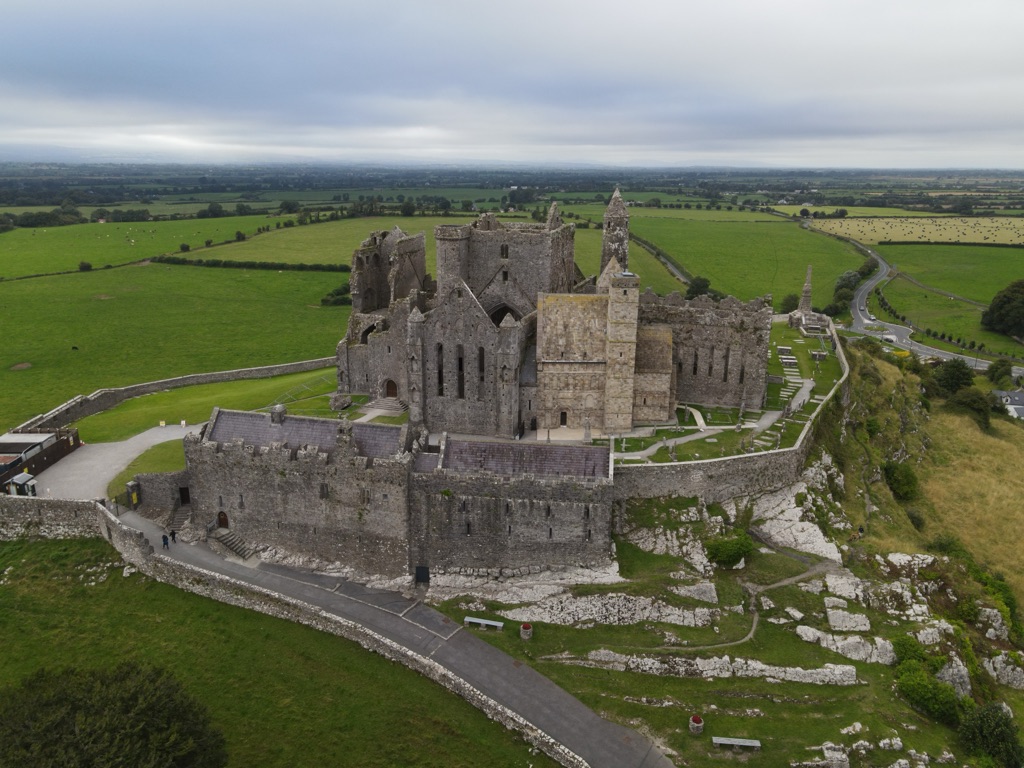The Rock of Cashel, also known as St. Patrick’s Rock, is a historic site in County Tipperary, Ireland. It’s a picturesque complex of medieval buildings set on an outcrop of limestone. The Rock of Cashel holds a collection of ecclesiastical remains, with its history deeply entwined with the mythology and politics of Ireland. It was once the seat of the Kings of Munster and is associated with converting the pagan Irish to Christianity. Today, it stands as a monument to Ireland’s complex and storied past, attracting visitors from around the world.
Get your dose of History via Email
Historical Background of Rock of Cashel
The Rock of Cashel’s origins are shrouded in both history and legend. It was reputedly the site of the conversion of the King of Munster by St. Patrick in the 5th century. The oldest structure is the round tower, dating back to c.1100. The majority of the other buildings date from the 12th and 13th centuries. The Rock served as the traditional seat of the kings of Munster for several hundred years prior to the Norman invasion.
In 1101, the King of Munster donated the fortress on the Rock to the church. The site flourished as a religious center. Over time, it accumulated a remarkable collection of medieval architecture and Celtic art. The complex includes a round tower, a high cross, a Romanesque chapel, a Gothic cathedral, and a 15th-century castle. The Rock of Cashel also witnessed significant events, such as the crowning of Brian Boru as the High King of Ireland.
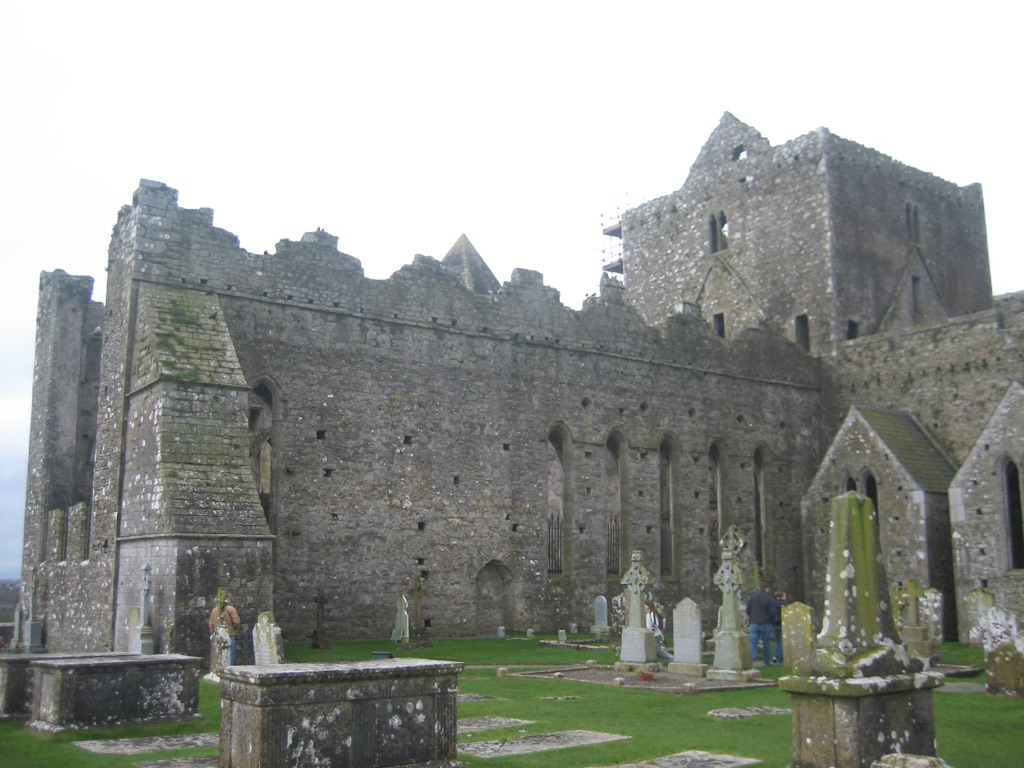
Throughout its history, the Rock of Cashel was at the center of power struggles and invasions. It was besieged several times, including during the Irish Confederate Wars. Despite its turbulent history, the site has preserved a wealth of art and architectural detail. It was handed over to the care of the State in 1874 and is now a national monument.
Notable inhabitants include Cormac Mac Carthaigh, who commissioned Cormac’s Chapel, the jewel among the buildings at the Rock. The chapel, consecrated in 1134, is a sophisticated structure with remarkable carvings and architectural features. The site’s significance is also marked by the visit of Queen Elizabeth II in 2011, highlighting its importance in Irish heritage.
The Rock of Cashel played a pivotal role in Irish history, not just as a center of religion and learning, but also as a symbol of power. Its strategic location and imposing presence have made it an enduring icon of the Irish landscape. The Rock’s historical importance is matched by its cultural significance, as it continues to inspire artists, writers, and historians.
About Rock of Cashel
The Rock of Cashel is a striking set of medieval buildings, including a round tower, chapel, cathedral, and castle. The round tower, standing 28 meters tall, is remarkably well-preserved. It was built using the dry-stone method, typical of early Irish Christian architecture. The tower’s entrance, raised several meters above ground, suggests it served as a refuge and a lookout.
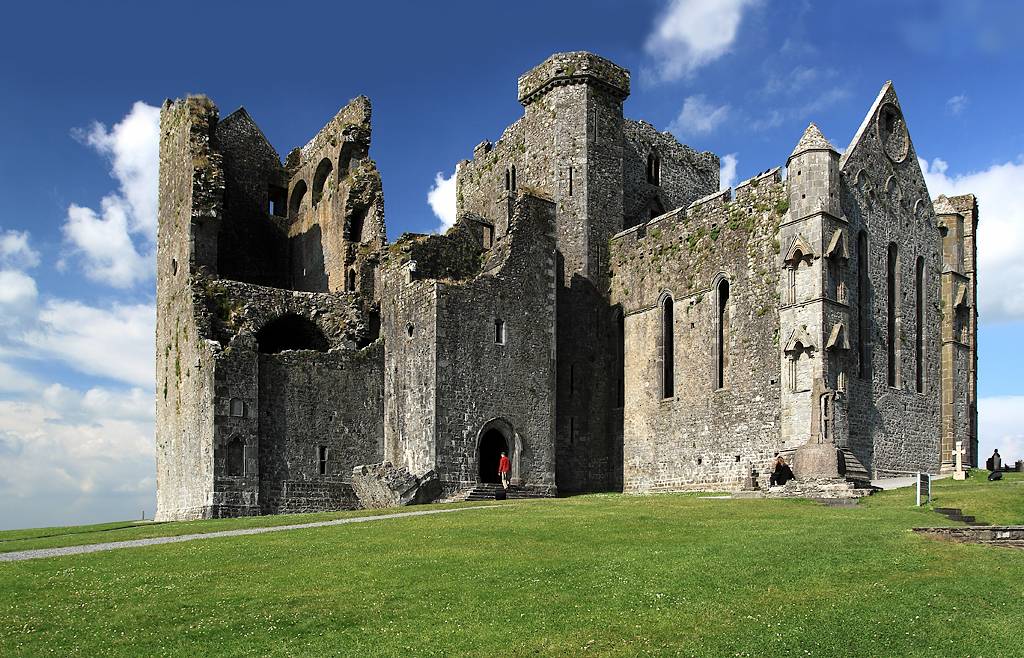
Cormac’s Chapel, consecrated in 1134, is a masterpiece of Romanesque architecture. It features a barrel-vaulted roof and twin towers, which are unusual for the period and region. The chapel houses one of the best-preserved Irish frescoes from this era. The cathedral, built between the 12th and 13th centuries, is a large cruciform church with Romanesque details and Gothic windows.
The Hall of the Vicars Choral was restored in the 15th century. It now houses the original Cross of St. Patrick and other ecclesiastical artifacts. The castle, added in the 15th century, was the last significant addition to the site. It reflects the changing nature of the Rock from a religious to a more secular power base.
The Rock of Cashel’s buildings are constructed primarily of sandstone, which has weathered to a golden hue. The site’s elevated position provides panoramic views of the surrounding countryside, emphasizing its strategic importance. The complex is surrounded by an ancient circular wall, enclosing a graveyard with high crosses and other historical markers.
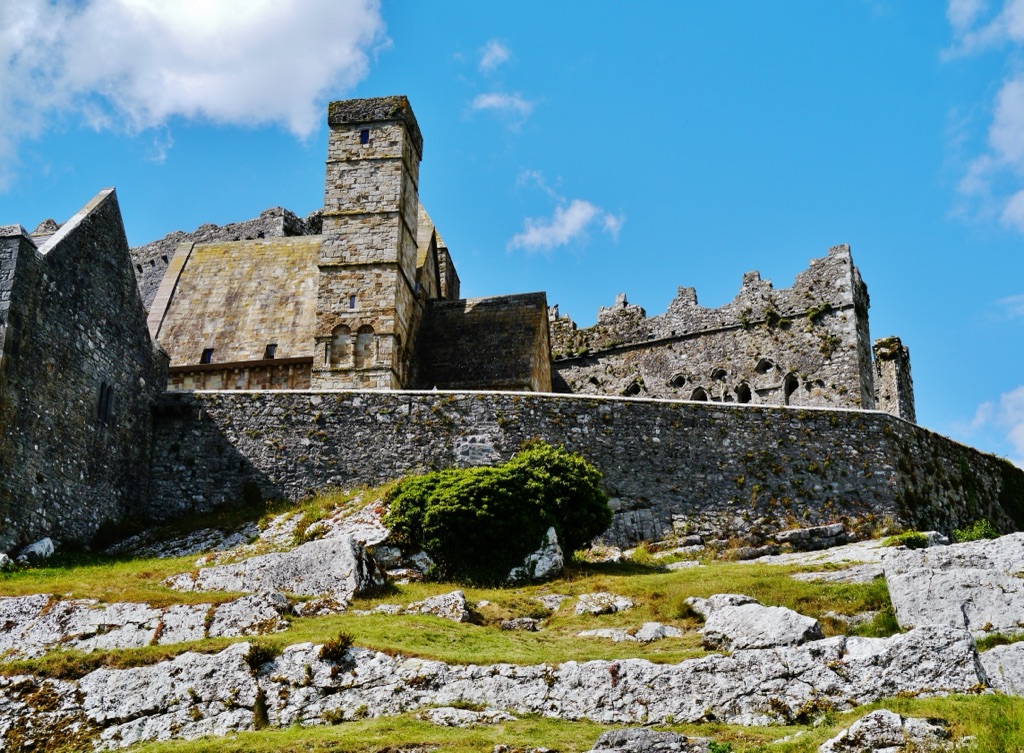
Preservation efforts have been ongoing to maintain the integrity of the site. The Rock of Cashel remains one of the most remarkable collections of Celtic art and medieval architecture in Europe. It is a testament to the skill and artistry of the craftsmen who built it and the resilience of the structures they left behind.
Theories and Interpretations
The Rock of Cashel is steeped in myth and history, leading to various theories about its use and significance. One theory suggests that the site was originally a pagan stronghold, converted into a Christian center by St. Patrick. The legend of St. Patrick banishing snakes from Ireland is often symbolically linked to the Rock.
Some historians theorize that the Rock’s ecclesiastical buildings were not just places of worship but also served as a fortress. This is supported by the site’s strategic location and defensive features. The presence of a royal site nearby suggests the Rock may have been part of a larger complex of power and religious influence.
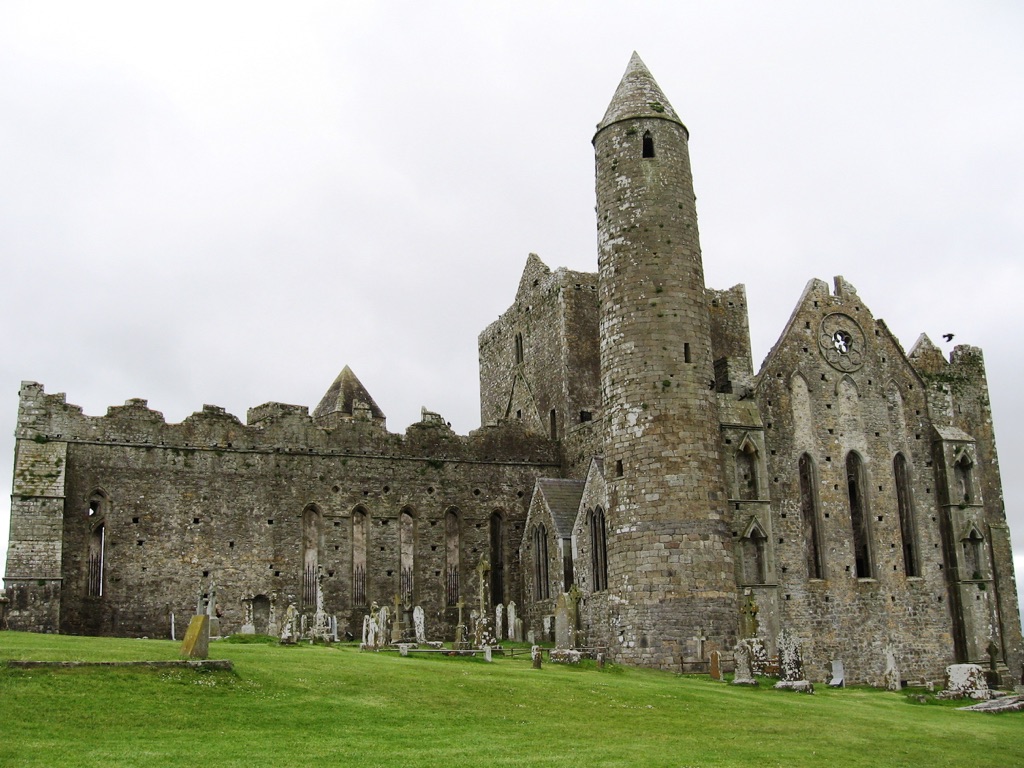
Interpretations of the site’s art and architecture have revealed insights into the religious and social practices of the time. The high crosses and frescoes are seen as expressions of religious devotion and artistic endeavor. The unique combination of Romanesque and Gothic elements in the cathedral reflects the transition between architectural styles.
Dating of the site has been carried out using various methods, including architectural analysis and carbon dating of artifacts. These studies have helped to confirm the chronology of the site’s construction and its significance during different historical periods.
The Rock of Cashel continues to be a subject of academic study and archaeological investigation. Each discovery adds to the understanding of its role in Irish history. The site’s mysteries and legends only enhance its allure, making it a focal point for both scholarly research and cultural fascination.
At a glance
Country: Ireland
Civilization: Irish
Age: The oldest structures date back to c.1100 AD
Conclusion and Sources
Reputable sources used in the creation of this article include:
- Wikipedia: https://en.wikipedia.org/wiki/Rock_of_Cashel
- Heritage Ireland: http://www.heritageireland.ie/en/south-east/rockofcashel/

